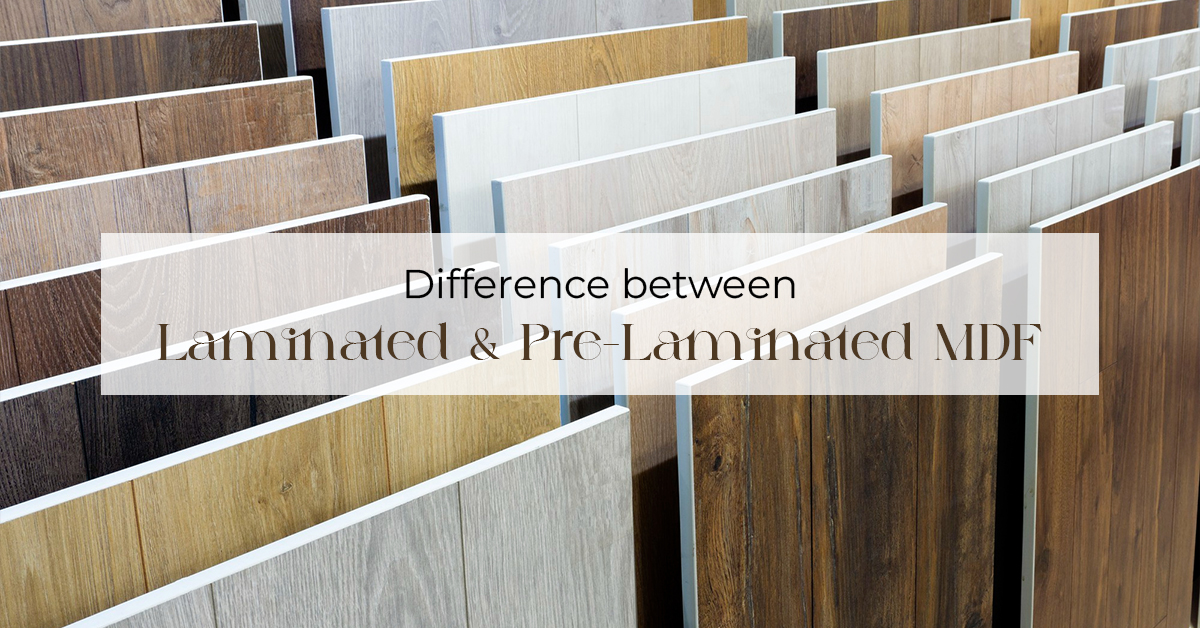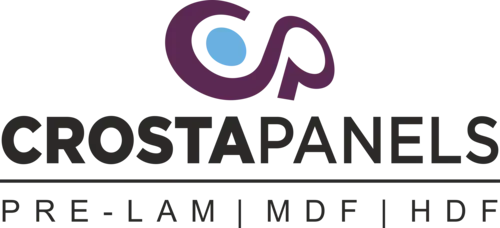Get Support
07496822205
Difference between Laminated & Pre-Laminated MDF

Difference between Laminated & Pre-Laminated MDF
Laminated and prelaminated MDF (Medium Density Fiberboard) boards are popular choices in the world of furniture making and interior design due to their aesthetic appeal, versatility, and cost-effectiveness. Besides their commonalities, the shape and the usage of these two kinds of boards are unique, the process of manufacturing and application that are absolutely different. The blog will be centered on contrasting laminated and prelaminated MDF panels, which will help grandstand their particular core features, benefits, and the projects that they are best suitable for.
Introduction to MDF
MDF is a type of manufactured wood product made from the wood chips, which are small pieces of wood residuals from hardwood or softwood trees. The fibers are combined with wax and resin binders, and the fabrication process is done using elevated pressure and heat. MDF is loved for its smooth surface; uniform density and the fact that it can be made into different kind of furniture, cabinet and decorative projects because of its advantage of the easier exposed to the finishing techniques.
Laminated MDF
Opposite to MDF Laminated panels are the MDF boards that have been coated with a thin layer of laminate after the board has being made. Laminating is a process that involves lamination of a paper or any material to the surface of the MDF with an aid of adhesive and heat and pressure. This layer can be even tailored to different texture and look, so it is suited for wood, stone or something abstract. This layer offers a wide range of design possibilities. The laminate surfaces offer both the attraction and the endurance of the boards by providing resistance to scratches, moisture, wear and tear; surface layers also make them somewhat lower weight and less expensive to produce.
Benefits of Laminated MDF:
- Aesthetic Versatility: Provide extensive collection of the surfaces and the structure. Create a unified visual impact suitable for the intended purpose and continue communicating your narrative to maintain both balance and vividness.
- Durability: The laminate free pressing technique provides extra shield against scratches, moisture and general wear.
- Maintenance: It is well constructed and it’s Quite Easy to Maintain. Consequently, it is Suit for Heavy Usage Areas.
Prelaminated MDF
Prelaminated MDF boards, on the other hand, are MDF panels that come pre-coated with a laminate or melamine layer directly from the manufacturing plant. Hence, the laminate is not an attempt to beautify the product by affixing it, but it is one of the main characteristics of these products as they leave the factory. A lamination process takes place by using the tack burner when the laminate is pressed and its temperature and pressure is highly controlled so that a strong and uniform bond is obtained.
Benefits of Prelaminated MDF:
- Consistency and Quality: This lamination provides the perfect finish as well as the same level of quality right across the board already.
- Time-Saving: It dramatically minimizes the time and the number of the labors spend on finishing the board by the fact of already prelaminated product.
- Cost-Effective: Applying the coating during manufacturing process, reduces the make up raw materials and labor, which accompanies the post-manufacturing lamination.
- Customization: On the other hand, with laminated MDF the decor has more flexibility for custom designs because the laminate is applied on it post fabrication. Such an example is drop-in mini-kitchen and enables kitchen manufacturers to introduce a wider range of laminates and to provide even more personalized designs.
- Consistency: Where uniformity across multiple boards is required, for instance, this is the preferred option since that is the norm. Finishing of MDF is factory applied, unlike the case of a smooth waterproof surface.
- Cost and Time Efficiency: A prelaminated MDF can be considered as a more cost-effective and timesaving option no matter the size of the project or when the urgent fulfillment is crucial as it bypasses additional lamination procedures.
- Budget Constraints: While prelaminated MDF may imply a cost saving option for projects that are severely out of budget, the lower production cost should not be a factor of quality.
- Durability Requirements: Both of them accomplish extra durability, but the appropriateness is dependent on the amount of pressure that is expected.
- Environmental Conditions: If the site atmosphere is moderately moist, a laminate which offers higher resistance might be considered ideal.
Differences in Application
The laminated and prelaminated MDF have their individual advantages and disadvantages, which make them suited to different projects. For instance, one might consider factors such as the design preferences, budget, and intended use when choosing between these two types of MDF.
Choosing the Right Option
Selecting between laminated and prelaminated MDF should be based on the project's specific needs:
-
Aesthetic Preferences: Contemplate whether you want to achieve the affect shown or your own texture of finish. Write an academic essay discussing the impacts of social media on the way individuals express themselves and connect with others. Laminated MDF provides a bigger scope of customization which leads to individual choice.
Conclusion
Specialized MDF boards like laminated and prelaminated MDF boards provide furniture manufacturing as well as interior design with a lot of advantageous features. Being aware of the wide ranges of how these 2 options vary—from how they are produced to what purpose they are put to use—will enable architects, builders, and hobbyists to make informed choices on the premise that the project goals, funds and design specifications are met. The creation of a mood is a universal goal shared with everyone, but the effects can be achieved by varying the emphasis given to customization, consistency, cost, and convenience while still satisfying our aesthetic and functional demands.

 By: Ethan
By: Ethan